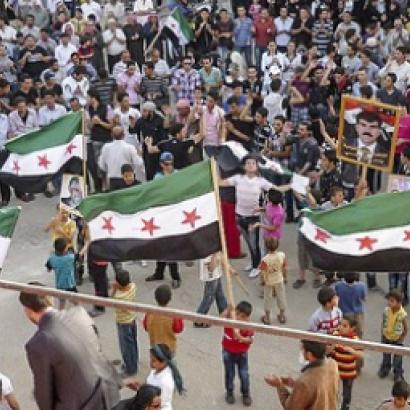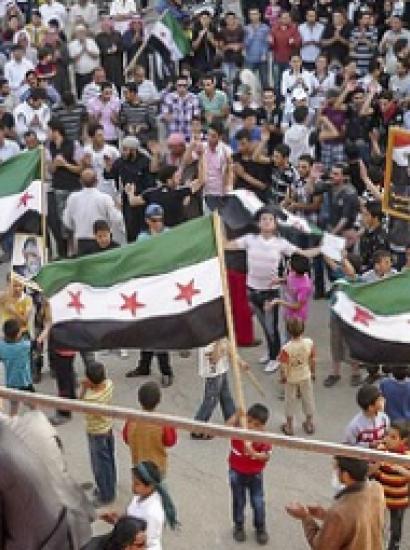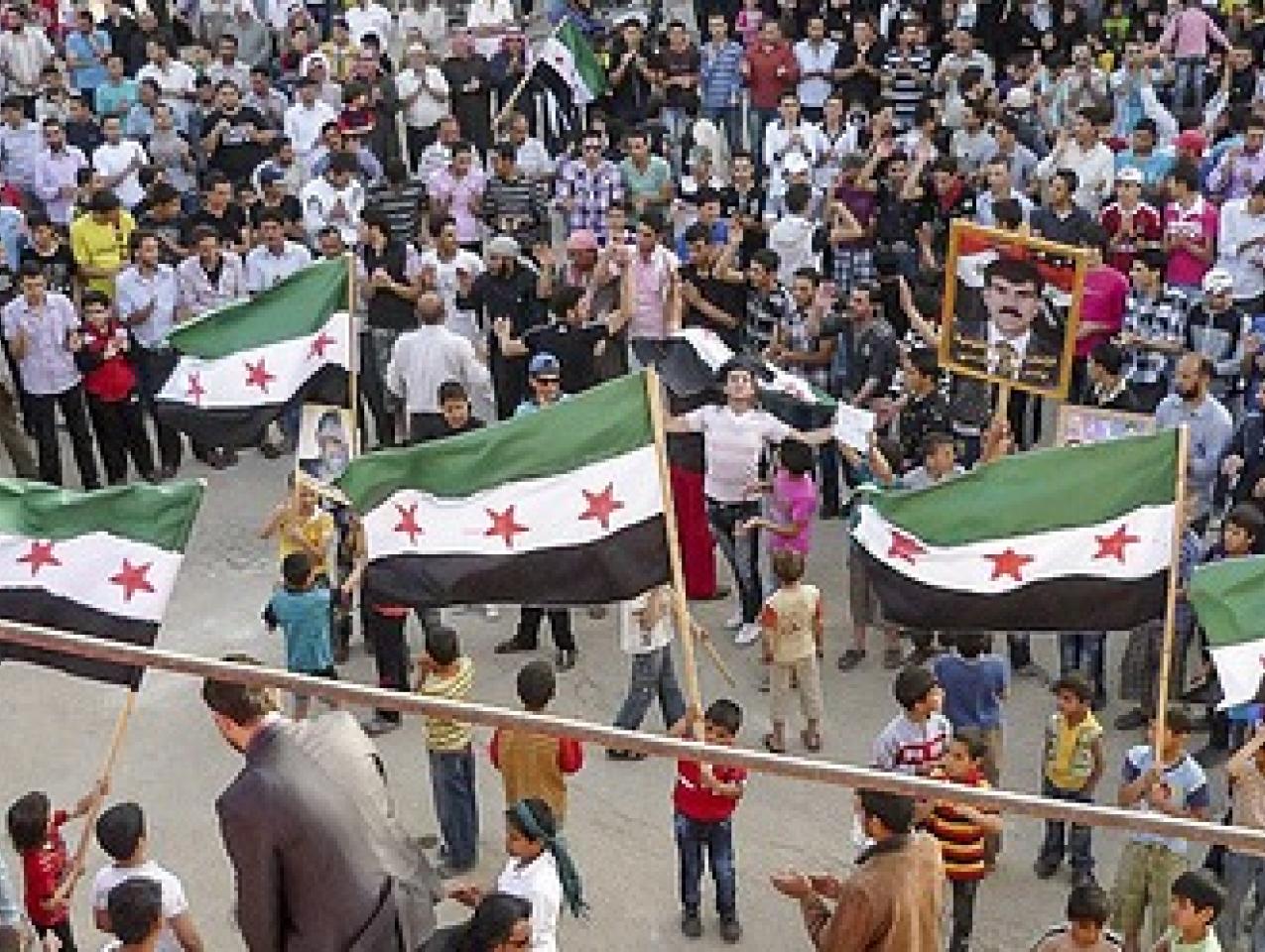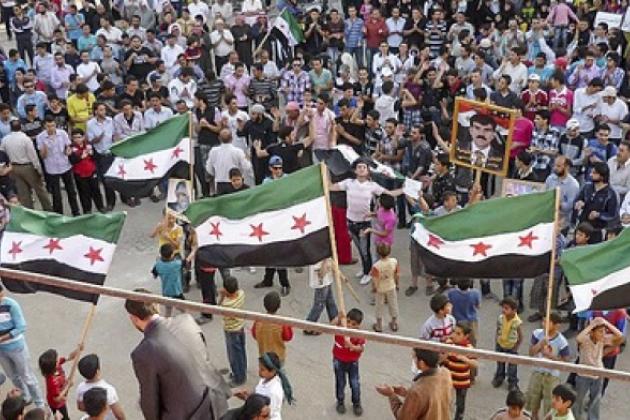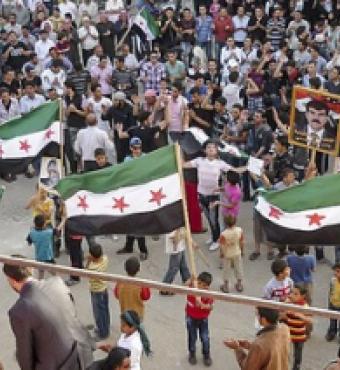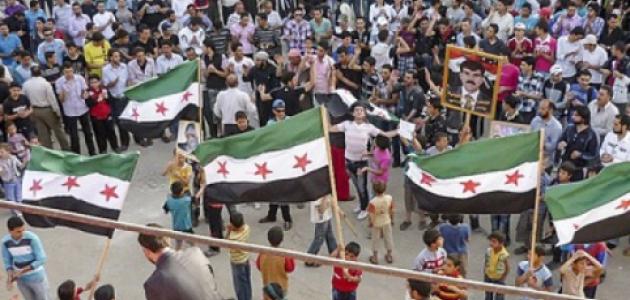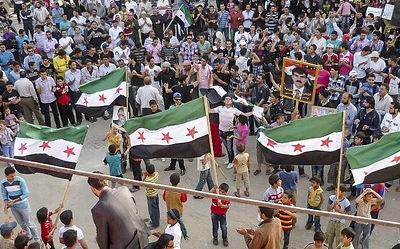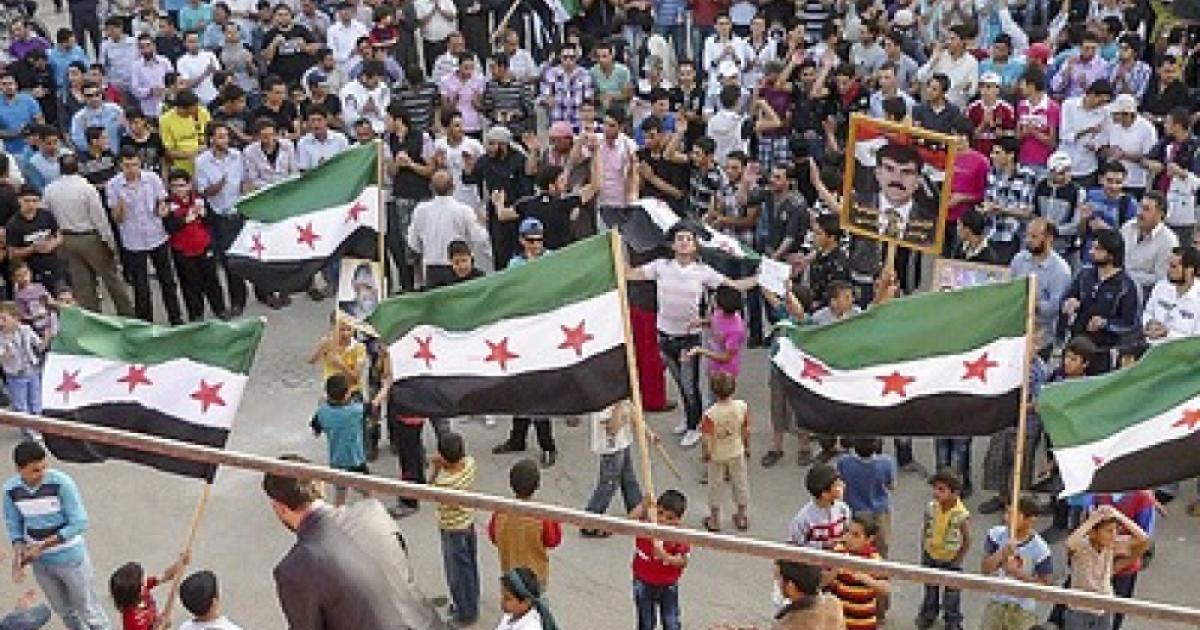- History
- International Affairs
- US Foreign Policy
The twentieth century has seen masters at the art of public protest, and the best of them—the likes of Gandhi, King, and Mandela—have become iconic historical figures. Beatified by history, they are remembered for their fortitude and martyrdom. Two were shot dead; the third spent almost a lifetime in prison. Yet their accomplishments owe as much to their courage as to their clear-headedness, cunning manipulation, realism in assessing one’s strength, and keen sense of their adversaries.
The art of public protest is to produce images and narratives striking enough to cause millions of people to reconsider their worldviews. It is a long process of mental reconstruction, which may eventually effect real change but only after years and often decades of well-crafted pressure. Violence plays many roles in that effort, but the role it does not play is that of the agent that will storm the status quo by force. The art of protest is not the art of war.
Non-violence is a misnomer. Any form of serious protest, even the most tempered, involves seeding a small dose of violence to provoke a brutal response that would grab the headlines. It is hoped that, eventually, the mighty adversary would lose legitimacy for exercising excessive force. In Russia, the punk band the Pussy Riot has managed to embarrass Putin with a dance act. The band’s protest was vulgar—the punk movement, from its origins in 1970s London, has always used vulgarity as a political instrument, pushing so far beyond the boundaries of propriety to expose the arbitrary and absurd nature of social norms. The Pussy Riot will not bring down the Russian dictator, but the frailty of those girls exposed the brutality of Putin’s regime.
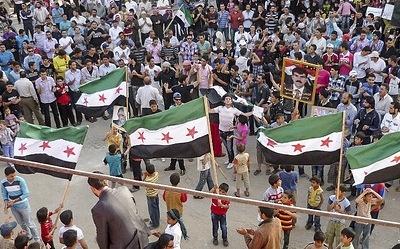
Photo credit: FreedomHouse
Terrorists understand that—at least most of them. Far from being manic killers, the only people they sometimes attempt to terrorize are their potential supporters to make sure they fall in line. Over their stronger adversary, however, they have no leverage other than psychological manipulation: shaming and demoralizing, over and over again, one incident at a time. A bit of violence helps, but the key here is restraint and good rationalization. Each victim has to be accounted for, explained away. Terrorists do not succeed through attrition. Terrorists have to speak and act in the normative language of their times, and they do have to speak a lot more than they can act.
This logic is not missed on the Arab/Muslim world. The Arab Spring succeeded precisely because of the way violence played out. A self-immolation, like a hunger strike, is the archetype of non-violent protest—even though its essence could not be more violent. A self-immolation points at the government as the ultimate source of violence, and in this case, it was the spark that drove the youth to the streets. The Arab leaders most closely connected to the West choked when time came for repression. Instead of bloodbaths, Tunisia and Egypt experienced peaceful regime changes. Yemen, Bahrain, and Jordan endured festering political crises, their leaders reluctant to reform but eschewing all-out crackdown for appearances sake.
The Libyan and Syrian governments had no such qualms about using violence, which landed them in hot waters, with a NATO intervention under the R2P “right-to-protect” in one case, and a dragged out proxy war between regional powers in the other. Each massacre or threat of a massacre by the governments of Libya and Syria made the rebels stronger, absolving them in the eyes of the world of their flaws and their sins and their limitations.
The Case of the Palestinians
After decades of experimenting with armed struggle, Palestinians made important stylistic changes to bolster the legitimacy of their claims. They had reached the world’s stage in the late 1960s by hijacking airliners (at first with a Robin Hood spirit), and then erred in the direction of brutal killings. But it became clear that their message was never as powerful as when it was built on Palestinian weakness: Sabra and Chatila, the rock-throwing children of the first intifadah, a loose gunman in a Hebron mosque, a boy caught in a crossfire in his father’s arms, a flotilla boarded at sea. Since 2010, from their failed attempt at breaking the maritime embargo to their failed bid for statehood, Palestinians have produced narratives of victimization that, it seemed, could compete with the pogroms and the Holocaust that inspired and justified the creation of a Jewish state.
The Arab Spring came like an ideal platform to take their protest on the world stage but, for more than a year, the population of the West Bank and Gaza sat out the great revolt. Then, in a throwback to the past, Palestine returned to the limelight with salvoes of rockets and even a bus bombing into Israel. Hamas was branded as a warmongering Iranian stooge, just when Tehran was losing whatever credentials it may have had among Arabs for backing the Syrian regime. To offset the public relations fallout of this ballistic spree, Hamas pointed to the squalor of Gaza under siege, and to the civilian victims of Israeli strikes—the distasteful “body count” ledger.
Some have argued that Hamas gained from the recent tiff with Israel, which relaxed its siege. But the stylistic choice to project the Palestinian cause as a military rather than as a civilian affair is self-defeating, given that the imbalance of power makes any thought of field war delusional. Palestinians, to compensate for Israel’s military superiority, can only build up on international legitimacy. They can only do that by staying on message with regard violence.
Gandhi, King, and Mandela too had a difficult time staying on message. Their bases, frustrated by slow progress, got rambunctious, and their leadership was challenged by more aggressive rivals. India, the home of “non-violence,” was submerged by a wave of inter-ethnic strife that cost Gandhi his life and laid the foundations for an endemic state of war between India and Pakistan. South-Africa’s ANC had Umkhonto we Sizwe, an underground terrorist arm. The politically savvy Sinn Fein/Provisional IRA had the die-hard Real IRA.
In the end, the stylistic presence of the “great men” overshadowed the darker sides of their struggles. Once, the Arab world had leaders too—men like Tunisia’s Bourguiba and Egypt’s Nasser—who had their ways with crowds and could power through on a wave of global popular support. A military man, Nasser tested the boundaries of force. The first time around, during the 1956 Suez crisis, he masterfully leveraged his country’s weakness to bring diplomatic salvation to a military defeat. But the 1967, six-day war with Israel was of a different nature. The two belligerents appeared evenly matched, and Egypt was tainted by its relations with Moscow. There would be no rally of international sympathy. Egypt, humiliated, was on its own. It would have to get out of its predicament the old-fashioned way: a hard-earned military stalemate in 1973 followed by a cold-blooded diplomatic deal brokered by the USA.
The Rise of Reckless Violence
When Nasser died, whatever visionary leadership existed in the Middle East dissipated into the grotesquery and corruption of petty tyranny. The 1970s and 1980s saw food riot after food riot, and wave after wave of repression. Islamism grew as a force of political opposition. Many found escape from political prison in the Afghan battlefields. The victorious Jihad of the 1980s relieved the Islamic world from a monotonous narrative of defeat that spanned the recent conflicts against Israel and India, European colonialism, and the fourteenth century Mongol conquest.
The Afghan Jihad was a terrible conflict. It was fought against Russian troops that used torture, reprisals against civilians, and chemical weapons. Resolve was found at the confluence of fundamentalist streams from Arabia (Wahhabism) and South Asia (Deobandism). The religion that gave those men their identities and endurance was as hard as their war against the Soviets. Key factors came together: extreme violence, extreme observance, death, and victory. Eventually, the matrix of the Afghan Jihad gave birth to a barbaric “jihadist style” that would disseminate in the following decades, first through the ranks of al Qaeda, and later through the extremist groups rampaging through the rubbles of failed states. Jihadists count many long-term failures, but many short-term successes. The way they have, in the span of just a few months, militarily imposed on a Syrian battlefield snubbed by Western powers is remarkable.
Uncensored violence came to the broader Middle East from another source: enduring ethno-religious cleavages. Pre-modern empires characteristically allow diverse identity systems to coexist in niches within a common but loose political space. For the Ottomans, it was the millet system; for the Moghuls, it was the caste system. Some call that tolerance, others call that segregation, but the result is the same. Those groups lived through changing times to bring old fashioned attitudes to the more modern polities born from decolonization, leaving it to the new states to manage populations prone to xenophobia and occasional outbursts of ethnic rage.
The frightening potential for ethno-religious strife had been revealed during the nineteenth-century massacres of Ottoman Christians and the genocidal 1947 Partition of India. While there is no inevitability to sectarian hatred—left to their own devices, many individually transcend the boundaries of identity—there are always vigilantes who beat the drums of communal defense. For them, bursts of inter-communal violence are self-fulfilling prophecies. Civil wars in Lebanon, Iraq, and now Syria and occasional pogroms in Pakistan and India show the resilience of pre-modern fears and cleavages, ready to be leveraged by political and social actors at a moment’s notice.
Then there is emotional, “feel-good” violence, whether driven by revenge or catharsis. It only takes a look at rioters in the streets of Athens to see the Muslim world has no monopoly here. However, in light of the spontaneous nature of cathartic violence, one wonders how often Muslim rage falls into that category. One could see catharsis in the crowds of the Arab Spring, just as there was catharsis in the Palestinian riots at the beginning of the intifadas. But Hamas’ rockets, cars set on fire every New Year’s eve in France by disgruntled youth (not all Muslims), and the recurrent thrashing of US embassies in the Muslim world show routine and premeditation.
Premeditation suggests strategic thinking, but the rationale for violence in the Muslim world, if it exists, is thin. Force has failed the region. Its endurance points in the direction of stylistic preference: an immersion in a sub-culture hung up on violence, a hooliganism that confuses violence with power. In a society of great wealth disparity but seeped in honor—where each man has equal claims on honor—violence can appear as the great equalizer, the way to transcend one’s condition. There is also an attachment to looking back as opposed to forward. Rioters in the region seem suspended in time, reliving the colonial era with gusto for a shot at fighting yesterday’s wars, at righting some ancient wrongs.
The hooligans who feel provoked to riot every time Islam is “insulted”—whether by cartoons of Mohamed, a desecrated Quran, an offensive amateur movie—are blind to the damage they do to the image of their faith. Even ideologues close to the jihadist milieu, like Egyptian Imam al Sharif and Jordanian Abu Muhamad al Maqdisi, have called to bring violence under control. Mainstream (i.e. non-jihadist) political Islamists from Hassan al Bana to al Qaradawi have sometimes winked at violence, more to diversify the portfolio of tactics than because they were committed to armed struggle. But, since the 1960s, organizations inspired by the Muslim Brotherhood have championed non-violent social work, making accommodations with the tyrants while building up soft power. The electoral outcomes of the Arab Spring rewarded their choice and confirmed their authority, but violence is coming back to haunt them. In Tunisia and Egypt, the almost peaceful revolutions are now foundering under street protests.
Islamists in power only have themselves to blame for failing to reach out to the skeptics, to give them hope and ask for patience, to meet them halfway over a constitutional deal. But the riotous reaction to the new order can have tragic consequences in a time when the region needs Western help, whether economic or military.
The Middle East is, in so many ways, a normal place, where the concerns of daily life are food, children, jobs, and housing. But its politics are defined by violence, oscillating between the oppressive shroud of autocracy and the riotous vandalism of the street. The case for violence has yet to be made because, looking at the history of past decades, violence is nothing more than a fetishism that has accomplished very little. It has, however, tarnished the image of the region, deterred foreign investment, prevented economic recovery and weakened the institutionalization of democratic debate.








